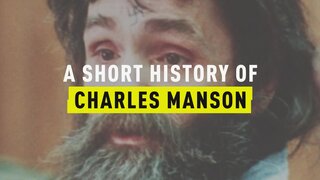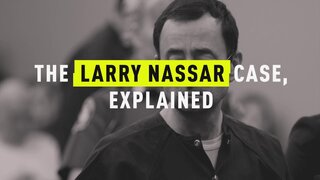Create a free profile to get unlimited access to exclusive videos, breaking news, sweepstakes, and more!
Who Was Hae Min Lee, Whose Case Was Made Famous In The ‘Serial’ Podcast?
Before Hae Min Lee’s tragic murder would make her name known to true crime fans everywhere, she was a normal high school student, juggling school activities and a demanding home life.
It’s a case that’s captivated the country.
On February 9, 1999, 18-year-old high school student Hae Min Lee was discovered buried in a shallow grave in Baltimore, Maryland’s Leakin Park, nearly one month after she’d gone missing on January 13. Investigators ultimately concluded that she’d been strangled to death, and her former high school sweetheart, Adnan Syed, was sentenced in 2000 to life in prison plus 30 years for killing her.
Nearly 15 years after Syed’s conviction, the case came under the national spotlight in 2014, following the premiere of the true crime podcast, “Serial.” Over the course of 12 episodes in the series’ first season, journalist Sarah Koenig meticulously examined the case from every angle, largely focusing on the question of: Is Adnan Syed innocent?
HBO’s soon-to-be-released documentary, “The Case Against Adnan Syed,” again takes another look at the now famous case, but will include aspects not covered in “Serial,” such as interviews with more people connected to the case and its ever-shifting cast of characters, as well as more intimate looks into the private journal Lee kept before she was killed. While Lee’s family reportedly declined to be included in the film — as they did with “Serial” — through interviews with those who knew Lee, HBO attempted to shine a light onto the victim at the center of this tragic story: Hae Min Lee.
Where did she go to school?
Lee was a senior at Woodlawn High School in Baltimore, Maryland, in 1999. She excelled academically as a student in the magnet program and also found time for extracurricular activities. She played field hockey for two years, lacrosse for three years, and managed the boys wrestling team, Lee can be heard saying during an interview with a local news outlet featured in the HBO doc.
When she wasn't at school, she worked part time at a LensCrafter store, where she would meet and later fall for a co-worker, Don Clinedinst, and she wanted to be an optician, according to the Baltimore Sun.
Lee also interned for the French teacher at her school, Hope Schab, who described Lee as a good student and someone she felt close to.
“She would come in at 7:15 every morning and stay for an hour and a half. She would bring her coffee in and do work on the computer for me or help me grade my papers. She was like a daughter to me,” Schab recalled during the HBO special. “She always had some cute little outfit on. Her hair was long and shiny and beautiful. She liked fashion. She definitely liked to draw and maybe that’s the way she set her mind aside from all the troubles that were going on.”
Krista Meyer, a fellow student of the school’s magnet program and a friend of Lee’s, described her as “just so light and bubbly.”
“It was really hard to be in a bad mood around her, but if I had to break it down to one word, I’d say 'goofy' is the best one,” she said.
Lee was also passionate about her hobbies and interests, another former friend and magnet program peer, Aisha Pittman, said.
“Whatever she was into, she was very into,” she said. “If it was her relationship, then she would talk about it in such glowing, flowery terms.”
What was her home life like?
Lee, her mother Youn Kim, and her brother Young Lee moved from South Korea to the United States in 1992 when Lee was 12, in order to live with Lee’s grandparents, according to the Baltimore Sun.
Those who knew Lee when she was alive described her as someone who bore many responsibilities in her family life. She often served as a translator for her older relatives, Syed said during a phone interview included in the HBO documentary. And on the day that Lee went missing, her family was alerted to the possibility of there being something wrong because she failed to pick up a younger cousin from school that day, as she usually did.
Lee lived with her mother, younger brother, grandparents, uncle, and two younger cousins, the HBO doc revealed, but not even Lee’s closest friends were allowed to see much of her home life, though Pittman did recall Lee describing her mother as someone who was very strict.
“She was also looking for an escape from what her home environment was,” Pittman said. “Now that I think about it, I would drop her off or pick her up, but I had never been in her house. Only like, in the very front [of the] door.”
There also seemed to be painful parts of Lee’s past that she did not share with many. Syed recalled on one occasion, when he and Lee were still together, she got upset without warning when they were in bed together, and she revealed to him that she’d been sexually abused as a child.
“She was weeping. She had her face down, she had her, like, her legs curled up. I’d never seen nothing like that before, and that’s when she told me,” Syed said. “She had been sexually abused when she was in Korea. I was in shock ‘cause I’d never ever experienced that. I didn’t know anyone who had been abused. I didn’t know anything about that type of abuse.”
Lee did not tell him who’d abused her, only that she was young when it happened, and that her abuser never faced any repercussions for it, Syed said.
“She was a young girl, this was an older person and she couldn’t do anything about it, in a way,” he said.
What were her relationships like?
Lee seemed to value romance, as evidenced by excerpts from her journal included in the HBO doc.
“He’s the cutest, sweetest, and coolest guy, and he loves me. The bad thing is we have to keep things secret … but it’s ok, because love conquers all,” she wrote soon after she and Syed began seeing each other. Because both came from families where dating was discouraged, they were forced to keep their relationship a secret, which put a strain on both parties and led to multiple breakups. Near the end of her relationship with Syed, Lee developed feelings for a 22-year-old co-worker, Don Clinedinst.
Lee gushed over Clinedinst in her journal, writing, “I love you, Don. I think I found my soulmate. I love you so much. I fell in love with you the moment I opened my eyes to see you in the breakroom for the first time.”
But despite Lee’s passion, the age gap was a cause of concern for some of Lee’s close friends.
“I sensed her just falling head over heels way too quickly, and it was just too much, too soon,” Debbie Warren, who was another one of Lee’s friends from the magnet program, said. “She just came from a relationship that had the element of sneaking around, and she’s doing the same thing again.”
Some close to the case claimed that Syed believed that Lee had cheated on him with Clinedinst, and prosecutors claimed that this factored into Syed’s decision to murder Lee. Syed, however, told a different story during the HBO doc, claiming that he was never angry about Lee’s decision to pursue a relationship with Clinedinst.
“They portrayed it as if, you know, I was angry with her, upset with her, that the final straw was when I found out that she started dating Don,” Syed said. “As if she didn’t tell me that she started Don, as if she didn’t introduce me to Don.”
On the day Lee went missing, she was planning to meet with Clinedinst, just as she had the night before, Lee’s former friends claimed in the documentary. Clinedinst told police when questioned that he was at work when Lee went missing, but because his mother was the manager at the store where he worked, some doubted — and still doubt — the validity of his alibi, and continue to criticize the police for, in their view, not investigating Clinedinst vigorously enough.
“There’s not a day goes by that I do not think about her and what happened. I was very much in love with her. But to be honest with you, I’ve got a lot of other things on my mind,” Clinedinst said when briefly interviewed for the documentary. He went on to say that he’d been disabled at the age of 23 and did not expect to live past 50.
Why were her journals included in the documentary?
One way that “The Case Against Adnan Syed” differs from the podcast that came before it is that it focuses heavily on Lee’s journal entries, which began right before she met Syed and ended the night before she disappeared. Animator Sara Gunnarsdottir teamed with director Amy Berg to use animation to bring Lee to life, allowing her to, in a way, tell her own story with her own words.
Berg was able to recover Lee’s journal because it was a part of the original case file, according to The Baltimore Sun. While going through those pages was an “emotional” experience for Berg, but she felt that giving Lee a voice was an important goal, she explained to Vulture earlier this month.
“That was one of my first goals, to be honest: to bring the real Hae to life through her friend’s accountings, and hopefully, through the journal entries,” she said. “I really wanted to make sure that she wasn’t just another victim. Hae was this beautiful young woman who had many things to look forward to in life. I wanted to make sure that we really, really felt her.”
While much of the three-episode series centers around Lee’s disappearance and murder, and the resulting police investigation and trial, ample time is devoted to exploring who Lee was before she died — a “caring” and “passionate” person, Berg said.
“She cared about justice, she cared about truth, she cared about real things. And she wanted a good life for herself. She wanted love so badly,” she continued. “I think she was hurt as a child and just wanted to be happy. That was what Hae was all about. And she seemed like a person who did the right thing. She was a very responsible, very admirable young woman.”



























